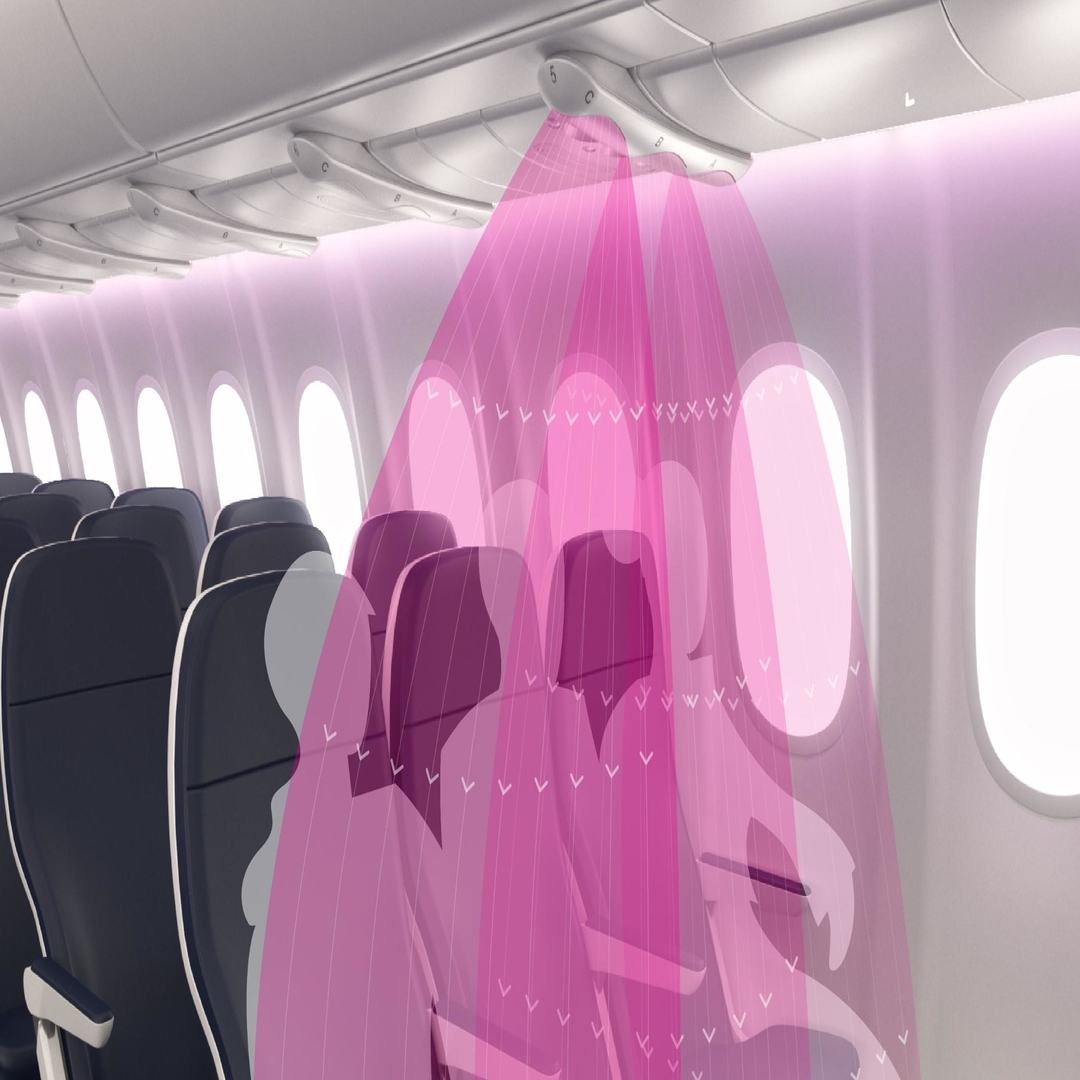Will This Invisible Germ Isolation Unit Make Flying Safe Again?
by Pratyusa|27 Sept 2020

• Teague, a design firm in Seattle, has come up with a new concept for safe flights amid the COVID-19 (coronavirus) pandemic.
• Rather than rely on physical distancing or barriers, the company has introduced AirShield, which directs passengers' exhaled air or sneezes downward.
• By using the aircraft's existing HEPA filter jets, the cost remains relatively low.
On a flight it will become definitely very difficult to maintain social distance. But if the filtration units on the flight could help. This would be a great idea. The filtration units actually help stop the spread of Covid-19.
This is what Teague has planned to do. They want to use the existing High-Efficiency Particulate Air (HEPA). Most aircrafts have robust filter systems. These filtration systems fillter and recirculate the air from the cabin and mix it with fresh air. The dirtier a HEPA filter gets, the more efficient it becomes.
The mission: redirect air downward at high pressure so it never circulates to your neighbors, keeping even the person in the middle seat safe.
The HEPA filtration system can make a complete air change approximately 15 to 30 per hour. Rather than distance, it's airflow is what that plays the most significant role in the spread of COVID-19 in an airplane. Therefore the design of the invisible germ isolation units with “blades” of air is going to help so much.
This concept is currently in use in shopping malls, medicine shops, etc. While those are typically meant to keep cool or warm air inside to control the temperature in a space—or keep bugs and smoke out—the AirShield concept creates a barrier around each set to disrupt the normal flow of air. That creates a de-facto shield for coughs, sneezes, or any other particulate matter, immediately directing it downward and out of the cabin to the HEPA filtration units.
In the 3D simulation of the design created by the company, the system looks at two rows of seats on the starboard side of a single-aisle aircraft. It has a constant flow rate of 0.0015 cubic meters per second (standard for those overhead air gaspers) at a velocity of 1.5 meters per second. A single breath from a passenger's mouth is represented by a velocity of 15 meters per second. Under these conditions, a single breath was effectively cast downward.
Did you like it?



